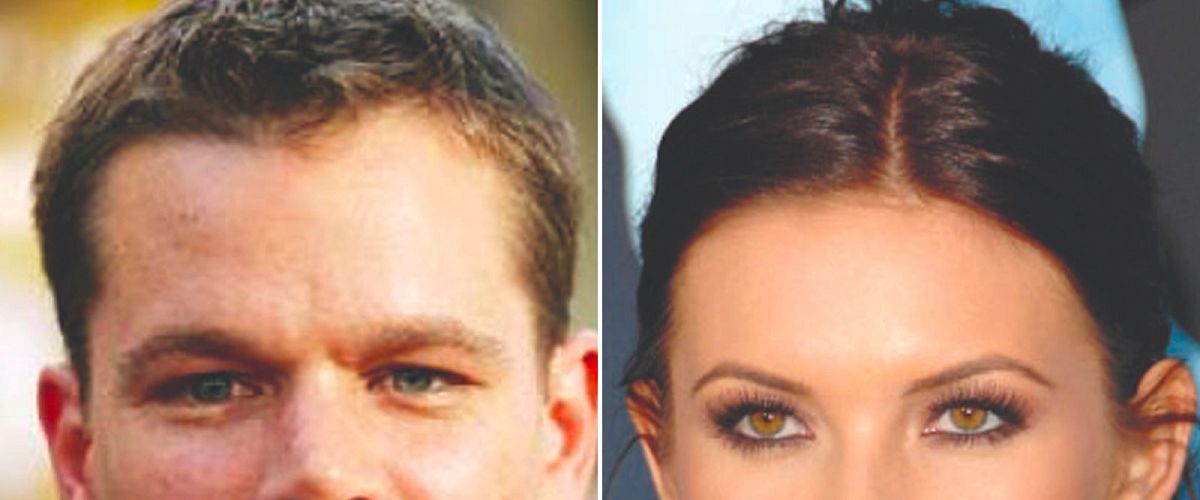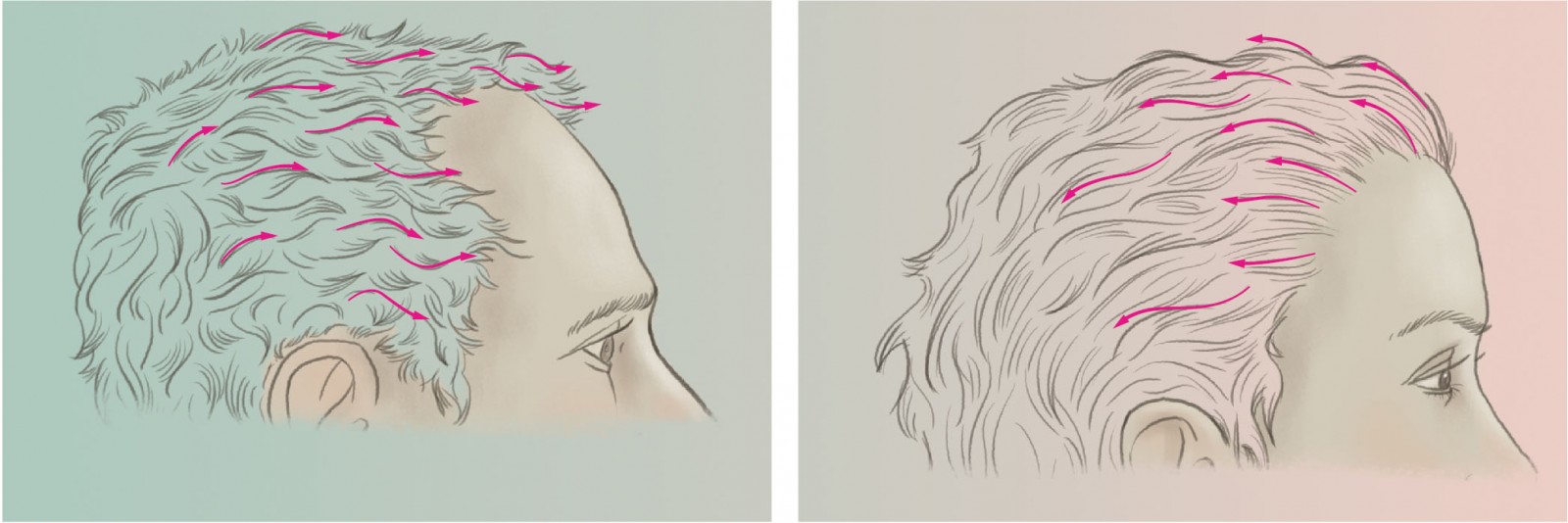Female hairline vs male hairline: 4 main differences

Understanding the differences between male and female hairlines is of critical importance in hair transplants or hairline lowering surgery for both women and transwomen as this is necessary to create a natural appearance.
Male and female hairs differ in position, shape, ageing pattern and directional flow of hairs.
Male hairline
| Female hairline
|
1. Position of the hairline
A masculine hairline is typically found further back on the skull than a feminine one, creating the appearance of a larger, more prominent forehead. This is accentuated even more due to the ageing of the hairline.
2. Shape of the hairline
Apart from the position, the shape of the hairline is different as well. A man usually has receded temples that give the hairline an “M” shape. Conversely, the female hair pattern is oval-shaped. It is smoother and full around the facial edge. The temporal area is one of the most important areas. The shape of the outer temple area is especially important, since it's a hallmark of feminine beauty.
 The difference in shape between the male and female hairline
The difference in shape between the male and female hairline
3. Ageing pattern of the hairline
An additional difference between male and female hairlines comes with age. There is a typical male pattern of baldness with a recession of the hairline. This is something that usually won't occur in women. While biological women sometimes do suffer from hair loss, it is usually an all-over thinning of the hair from the entire scalp and isn’t specifically targeted to one area.
Although male pattern hair loss is unwanted for most men, it can be particularly distressing for trans women as it serves as a physical sign of an undesired male phenotype. A receded hairline or a bald spot in the crown may pose a significant issue when completing a male to female appearance.
 Male ageing pattern: Male pattern baldness
Male ageing pattern: Male pattern baldness Female ageing pattern: overall thinning
Female ageing pattern: overall thinning
4. Flow of the hairs in the hairline
Finally, hairs that grow in the male hairline are almost opposite in direction and flow to those in a female hairline. The hair angles in a male hairline are projected straight forward, whereas the female hairline is shaped in a cowlick with a slight whorl pattern, which aims in a principally backwards-facing direction.
 The flow of the hair in the male vs female hairline
The flow of the hair in the male vs female hairline
Feminizing the hairline
Hairstyle alone can often make your hairline feminine looking. Bangs can make the face appear more feminine and can even hide the frontal bossing as well. Also, hairpieces or wigs can be worn to cover the male pattern baldness, but these “solutions” are simply not the permanent solution most people want. Many trans women want their own growing, real hair in a fashion and style that aligns with their desired gender and taste.
To feminize a hairline you have 2 different permanent options:
- Surgical hairline lowering—immediate and fast result but often cannot close the widow peaks completely. Hair transplantation is needed to create the perfect female hairline. An additional advantage of this sequence of treatments is that potential scars remaining from a hairline lowering can be made completely invisible by placing hair transplants in front of them.
- Hair transplants—ideal for filling up the temporal area.
Related articles:
We are doing our very best to keep this information up-to-date. In case you see anything that no longer seems accurate, or in case you have a question, please fill out the form below!
